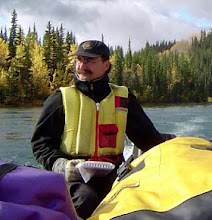Bus travel is inexpensive, reasonably comfortable and relaxing, if you don't try to go far in a day. However from Whakatane eastwards, bus service loses these advantages. A car offers flexibility in route choice, some responsibility (alas, nothing is free) and I pick the forestry roads up the Rangitiaki River valley. The bottom of the valley is now made into rich pasture and new crops divided by the river with hill ranges not far away in either side. However, the valley bottom climbs steeply, the ridges close in and many slopes are rough scarred with timber cutting, others show the precise lines of commercial reforestation, while still others are now recovered with thick pines ready to be harvested. These hills stand in stark contrast to those few still covered with the diverse and uneven native vegetation. Above the local school at Te Mahoe the course blasted rock surface of the large earth filled dam fill the sky and hold back the river. Immediately adjacent a rock quarry reverbrates to blasting and loading of stone trucks. The diversity of the natural is matched by the varieties of economic exploitation in only a short distance.
 |
| A big rock fill dam. A sign on the other bank notes the past presence of a Maori cemetary. |
Half way up the river my planned route is closed off by regulations and a piece of missing road, washed out by the recent spring storms. I stop at the Dept. of Conservation (parks) visitor centre where staff turn me south east towards Te Urewera National Park and the Oputau Marae home of Richard and Meriann White in Ruatahuna.
I meet Roger, Richard's brother sitting on the back deck, “Merianns working at the school and Richards gone off to drop some hunters in the park. Do you want some tea?” We sit and chat about why I'm there, interested in hearing more about Maori and land ownership, and Roger's sheep shearing days, “I could shear a sheep in 45 seconds, mind, some were much faster than that. Australian sheep, they take longer, they're different shapes.” Richard returns home and talk turns to the national park, resource management, community initiatives and the family's cultural tourism venture.
 |
| Ruotahuna in morning mist |
The Maori Iwi living in the region of the park wish to have ownership of the land returned to them. There are a range of opinions amongst the people about what this might look like, a few radicals wish to close off the land to outsiders altogther but most are perfectly happy to share the park area with all New Zealanders. Te Urewera has attacted visitors to its wild lands, the shores of Lake Waikaremoana especially popular, since the 1920s with both tourists and the regional hydro electric development promotions board which successfully convinced the government to harness its potential roughly a century ago.
The lake was formed about 2200 years ago and Maori villages were scattered along the shores. Colonial authorities removed the people from the lake during the New Zealand wars of the mid 19th century. Neverthelessthe area retains its reputation for stubborn resistance to outside authority. Richard tells me, “We were the last to be reached. Other Maori say, Oh, you don't want to go in there.”
The area has been a tourism centre for most of the past century. The national park, a Great Walk, and the associated boat service on Lake Waikaremoana, have brought people to the area. There area number of recent tourism ventures, providing transport, guided hiking and hunting, accommodation and trail biking. Some, like Richard and Meriann's Ahurei Adventures, are local Maori owned, while others are run by non-local Pakeha, a source of some local annoyance. Ahurei has struggled to develop its tourism market niche in one of the most difficult to access communities in New Zealand. The road to Ruatahuna is so spectaculary steep, narrow and winding that I found myself looking out the side window of my car more often than the front windshield in my efforts to stay on the road.
A local tourism venture faces challenges. In the nearby tourism centre of Rotorua, aka RotorVegas, there are quite a few Maori cultural offerings. Although sometimes dismissed as “plastic Maori”, most appear to deliver an authentic product. Two tourism offerings by local Maori families out of Rotorua to Whirinaki Forest Park, an original native forest reserve, do day trips and some limited overnights. Richard and Merrian offer hunting and back country hiking. But the place is isolated and people ether want it cheap or complain about the level of service. The conundrum of remote place tourism.
Ruatahuna is at the far edge of the district council's responsibility. The community felt they were not being well served and have independently worked to obtain services. They are especially proud of the locally developed, built and maintained drinking water system. Roger had pointed it out to me when I arrived and Richard has a schematic of the system tacked on the wall of his lounge.
I am invited to stay for dinner. We're making boil pot, “My favorite” pips up the grandaughter...” This is bones with meat on, watercress gathered from the river with flour dumplings and boiled potatoes on the side. Although the ingredients vary, it comes together much the same way we make borscht. With a salad of eggs, local avocado, cucumber and sprouts we join Rachel in her favorite.
I stay in the modest breeeze block motel alongside the general store in the village. There is a swimming pool, long abandoned as a frivoulous luxury, and a classic kiwi bbq in the back. Overnight the strong wind blows weather into the valley. Through the morning mist I watch the Iwi bus pass by with the children going to school.
 |
| Bulletin board at the Ruatahuna store. |









No comments:
Post a Comment